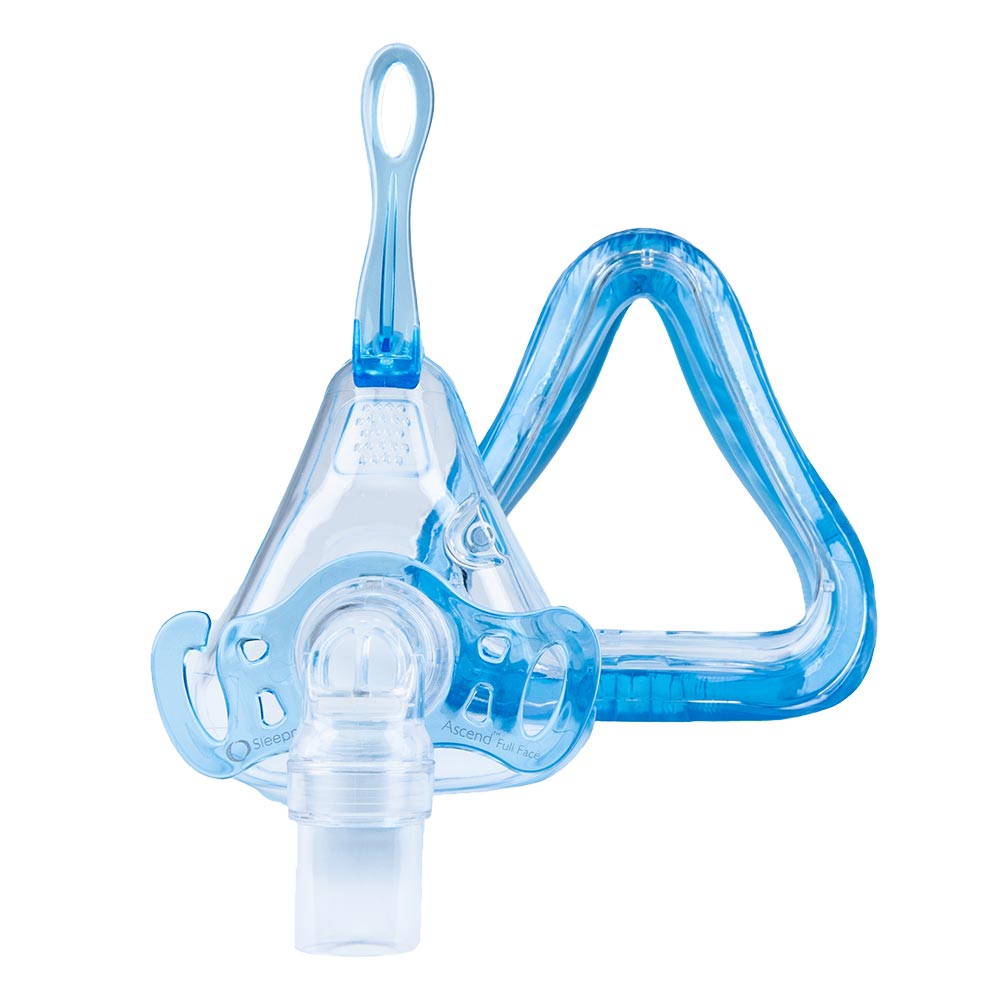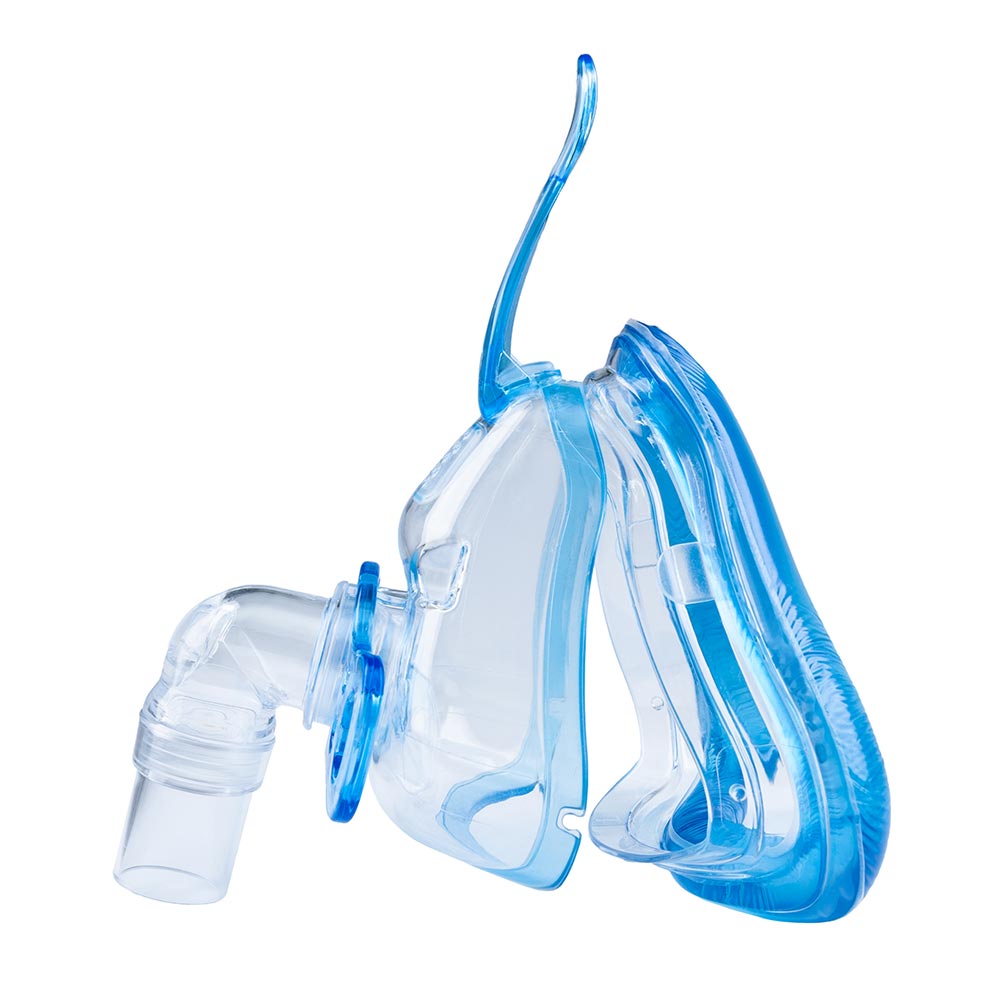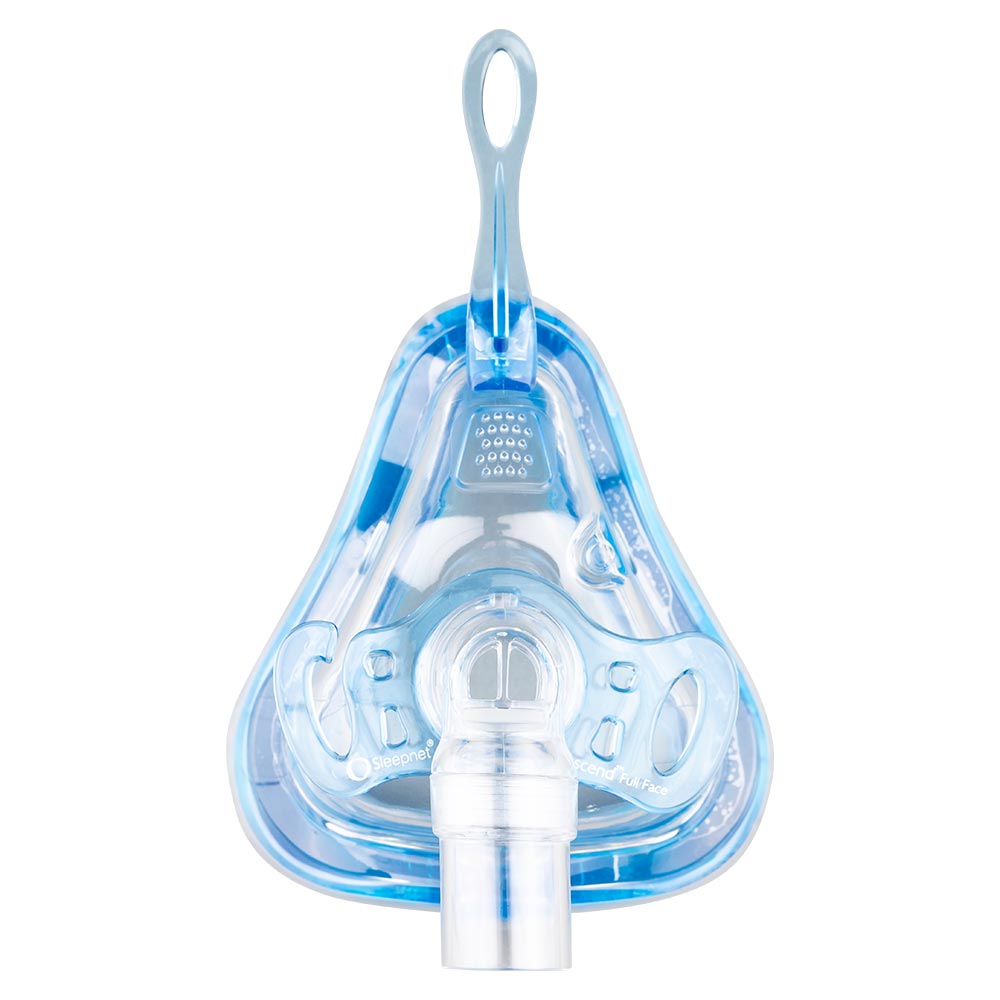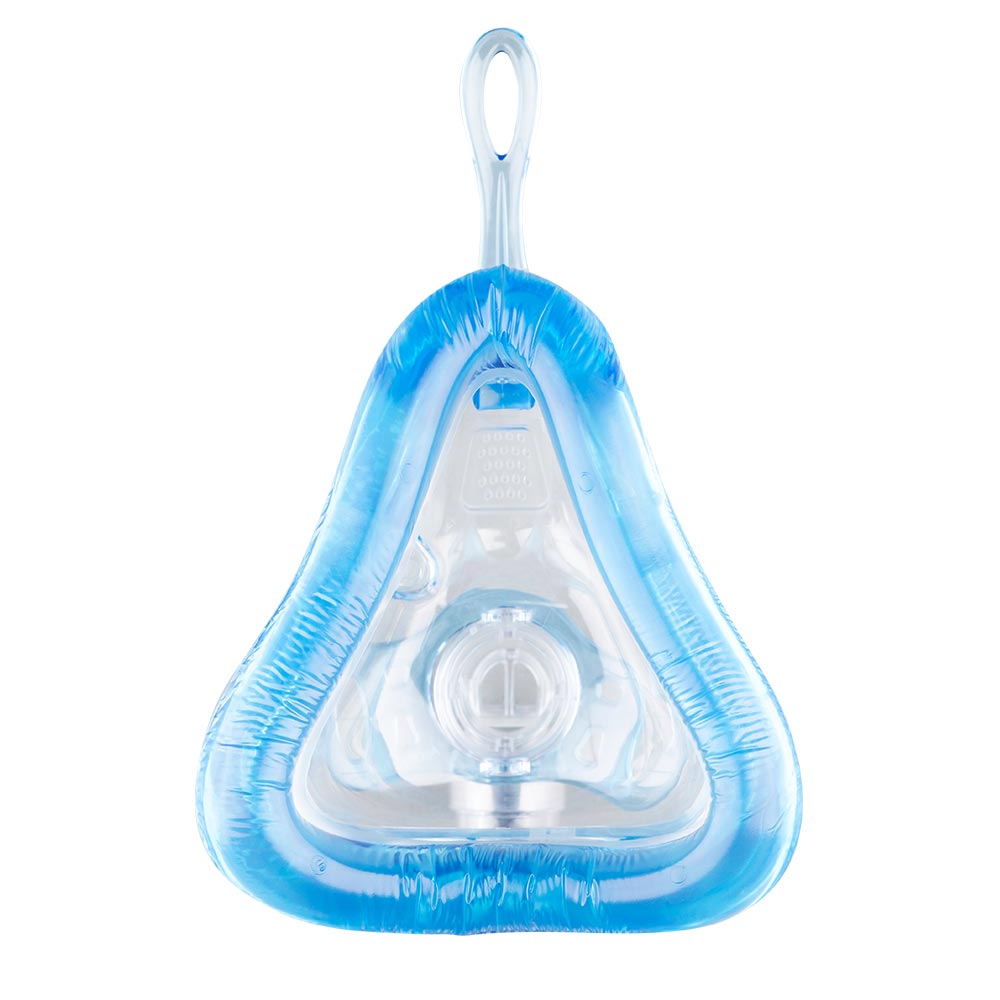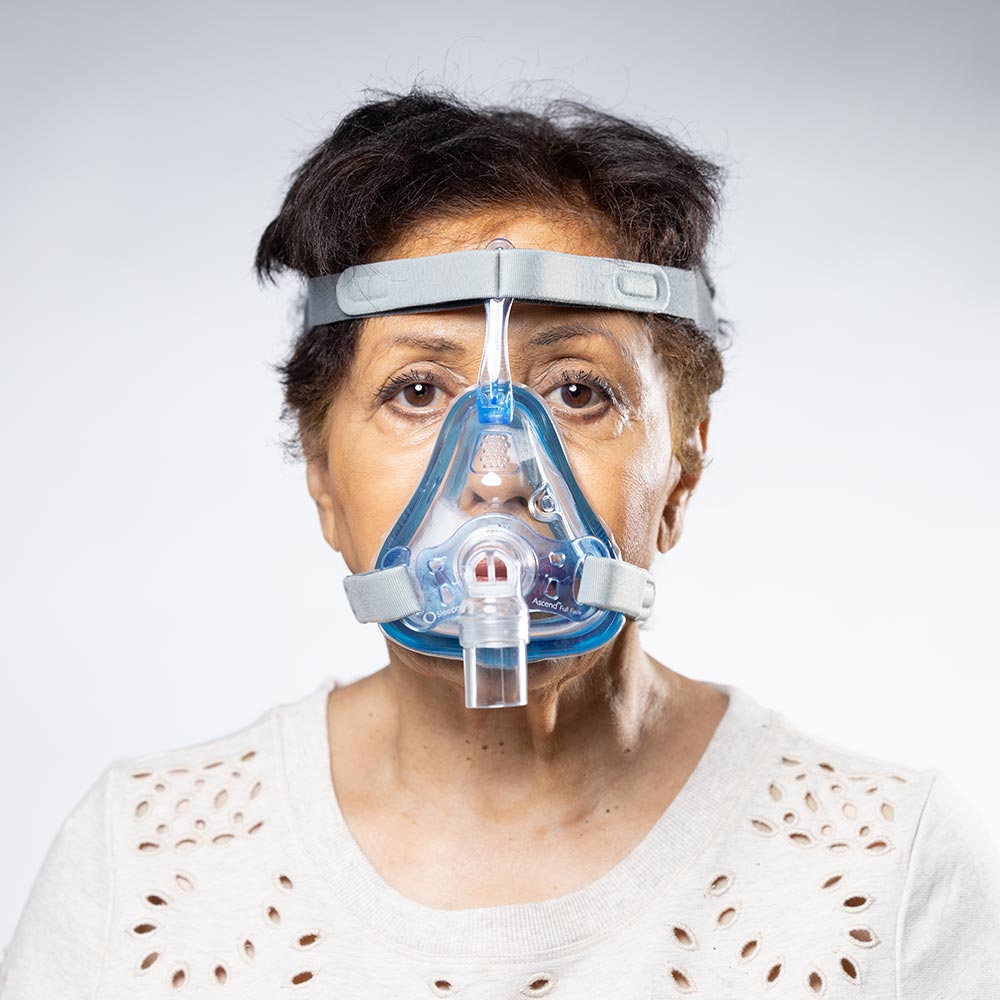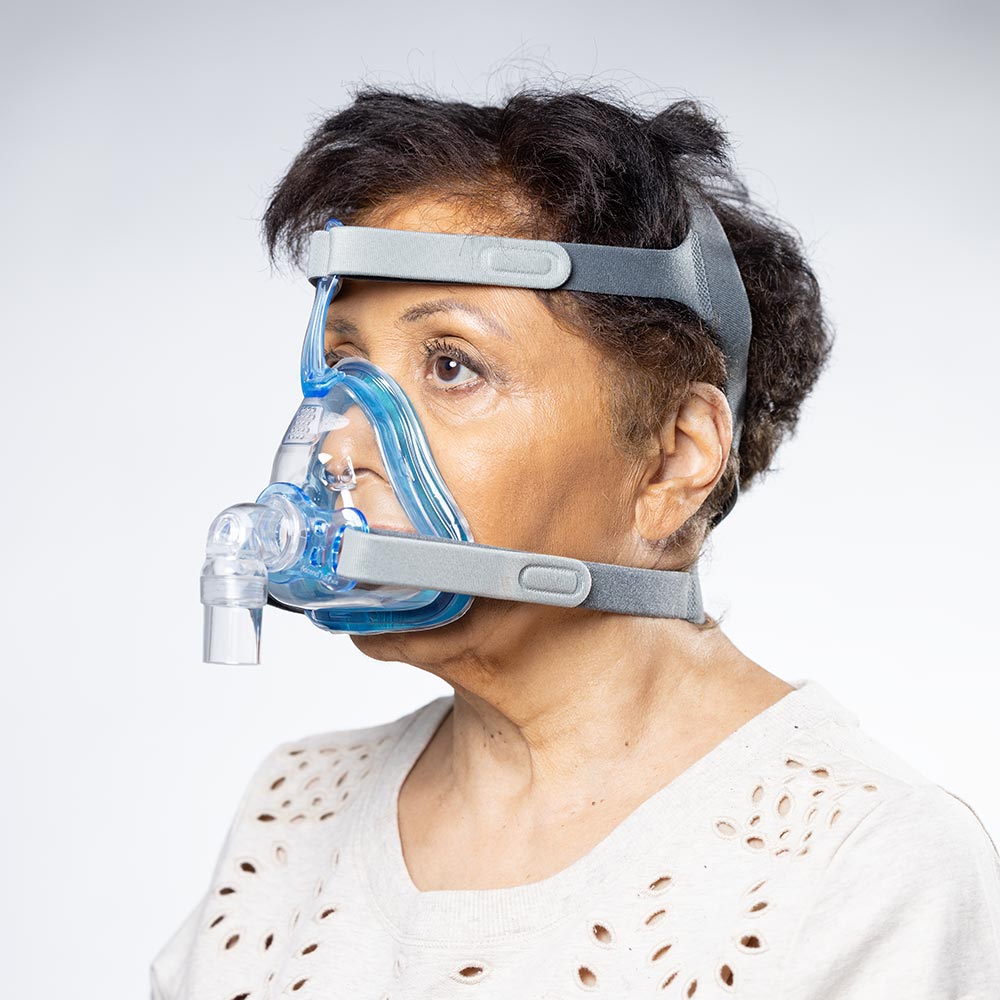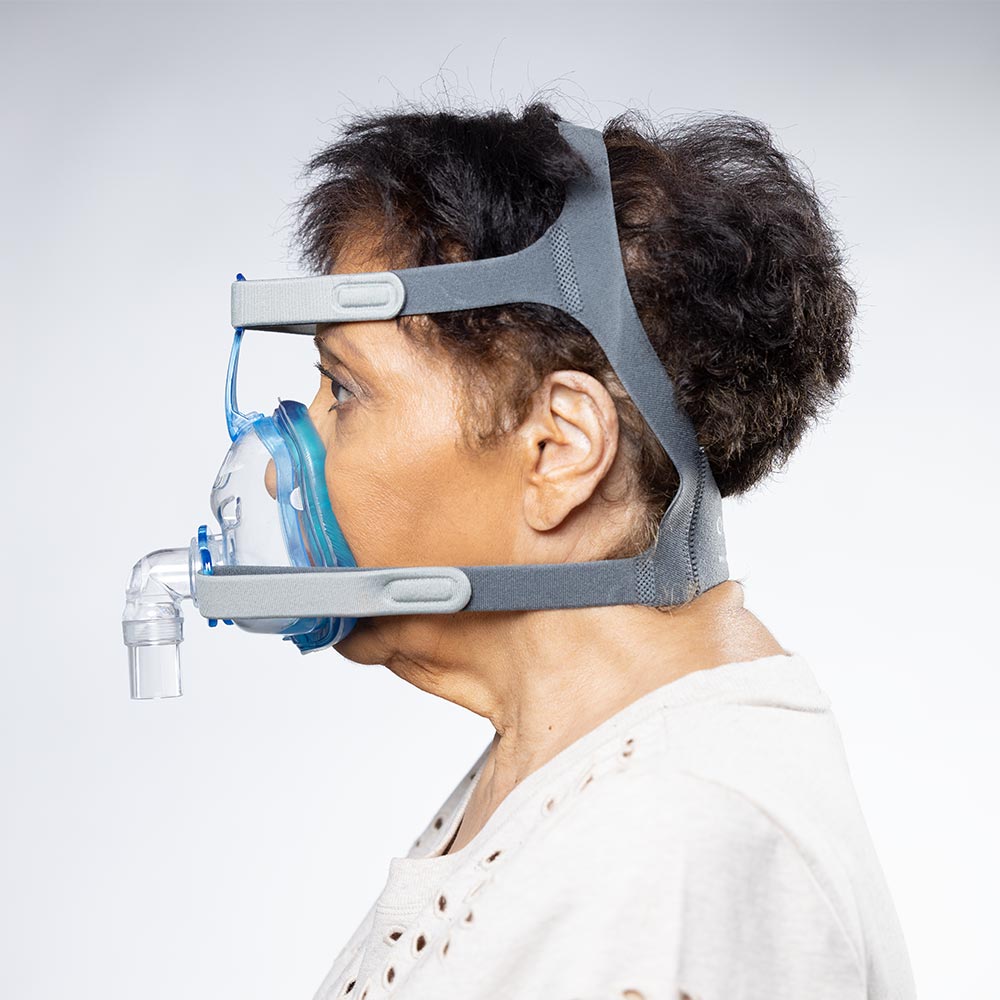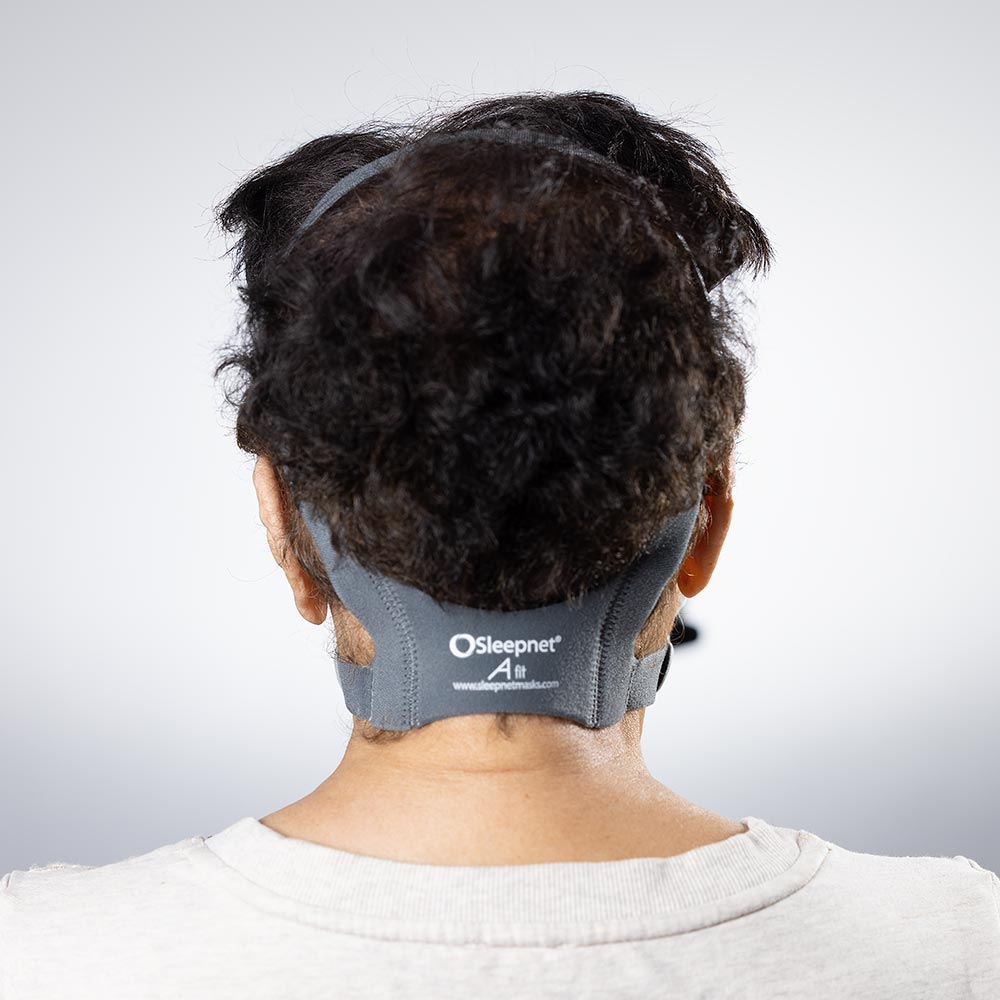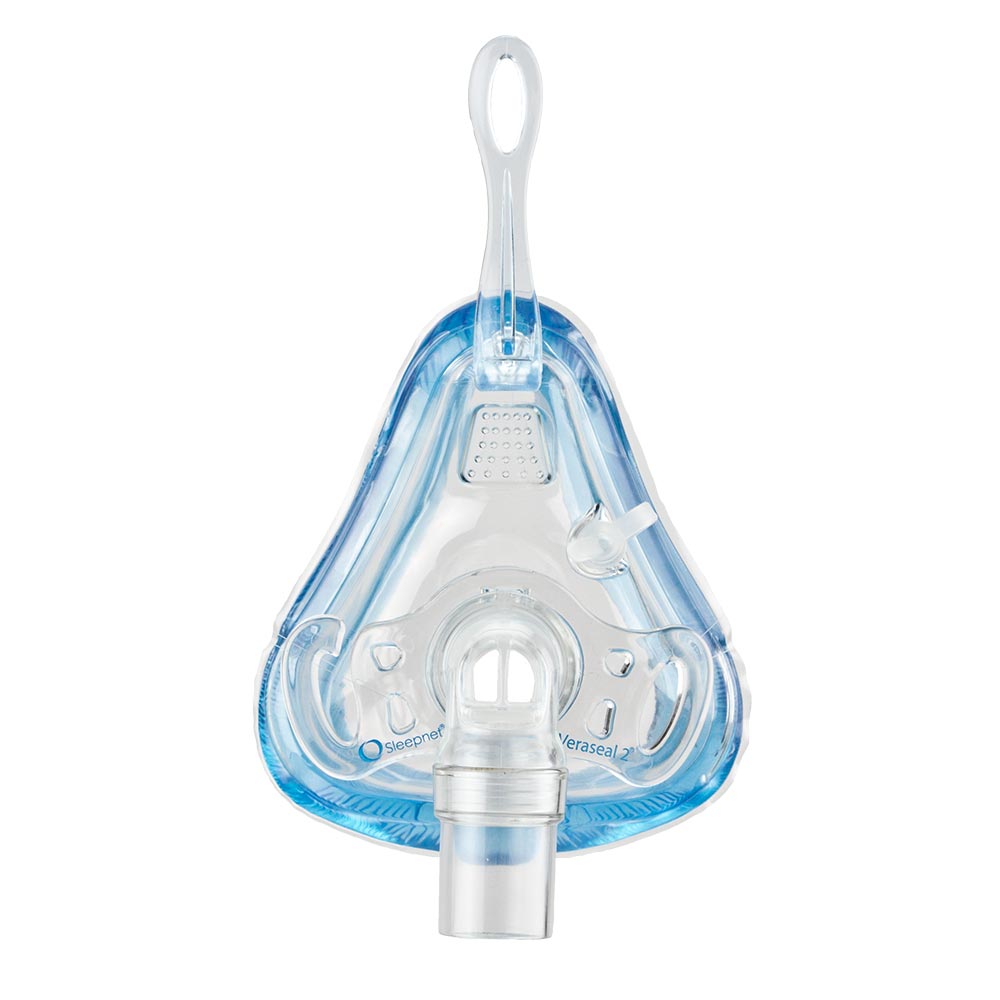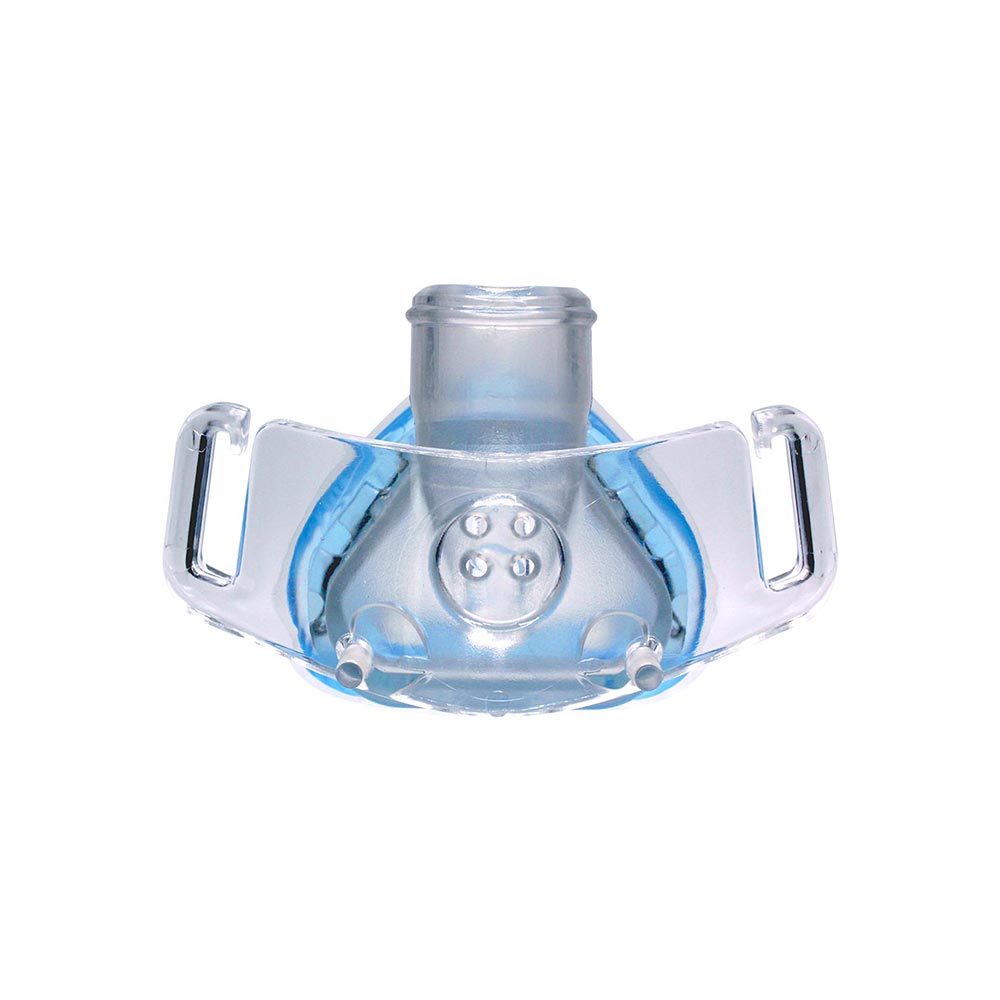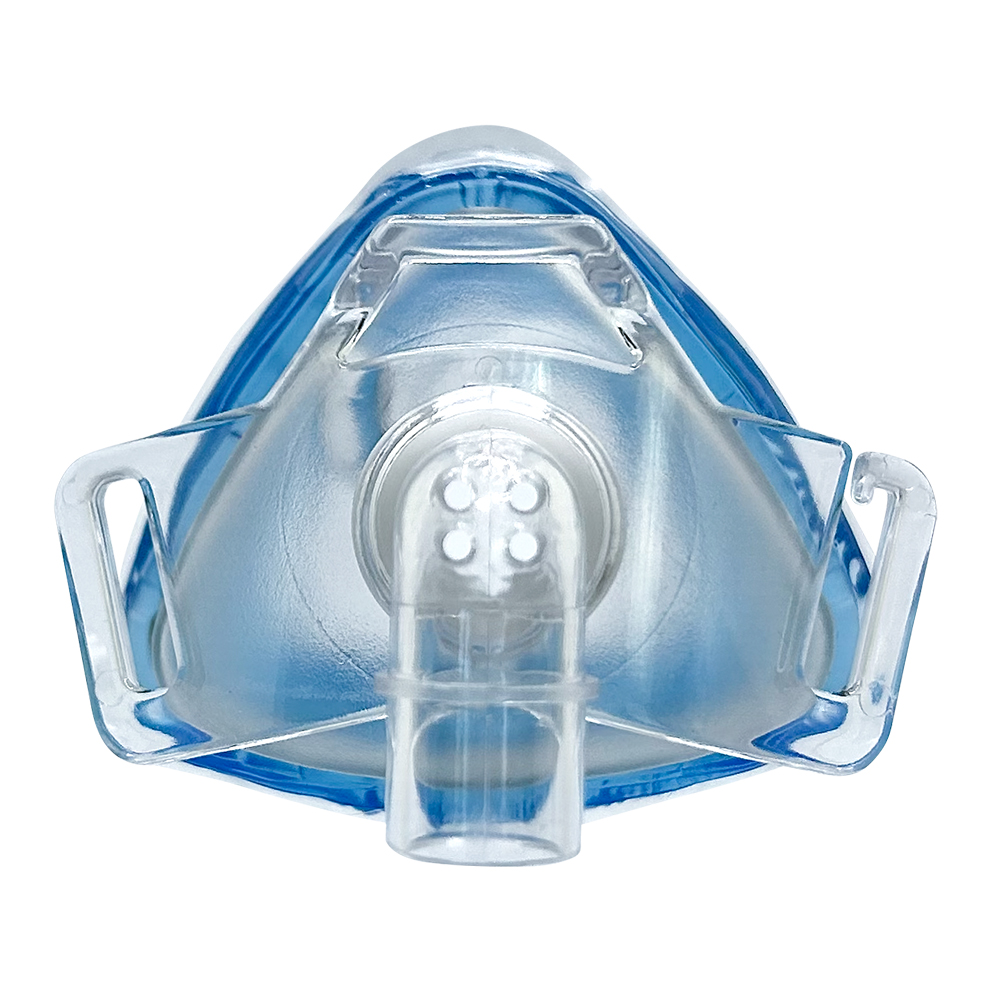© 2024 Sleepnet Corporation. All Rights Reserved.
Privacy Policy | Terms & Conditions | Legal | M90049 Version 0
Details
Available in three sizes (S, M, and L), the Ascend® Full Face Mask is a cost-effective option designed to accommodate most facial features and provide superior stability while maintaining a comfortable seal and minimizing skin irritation.
The Ascend® Full Face Mask uses Sleepnet’s replaceable AIR°gel® cushion, which is readily available for resupply.
Key Benefits:
- Comfort
- Better seal
- Easier mobility
- Resupply available
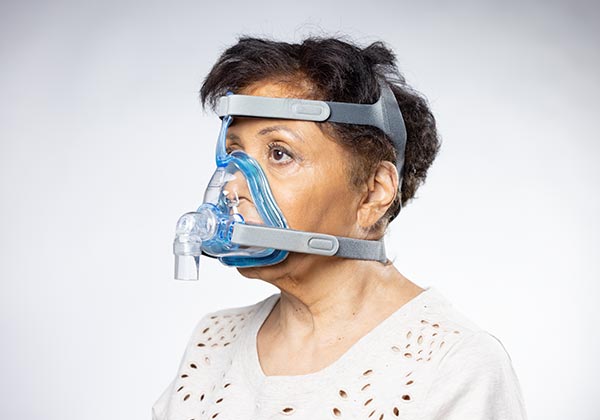
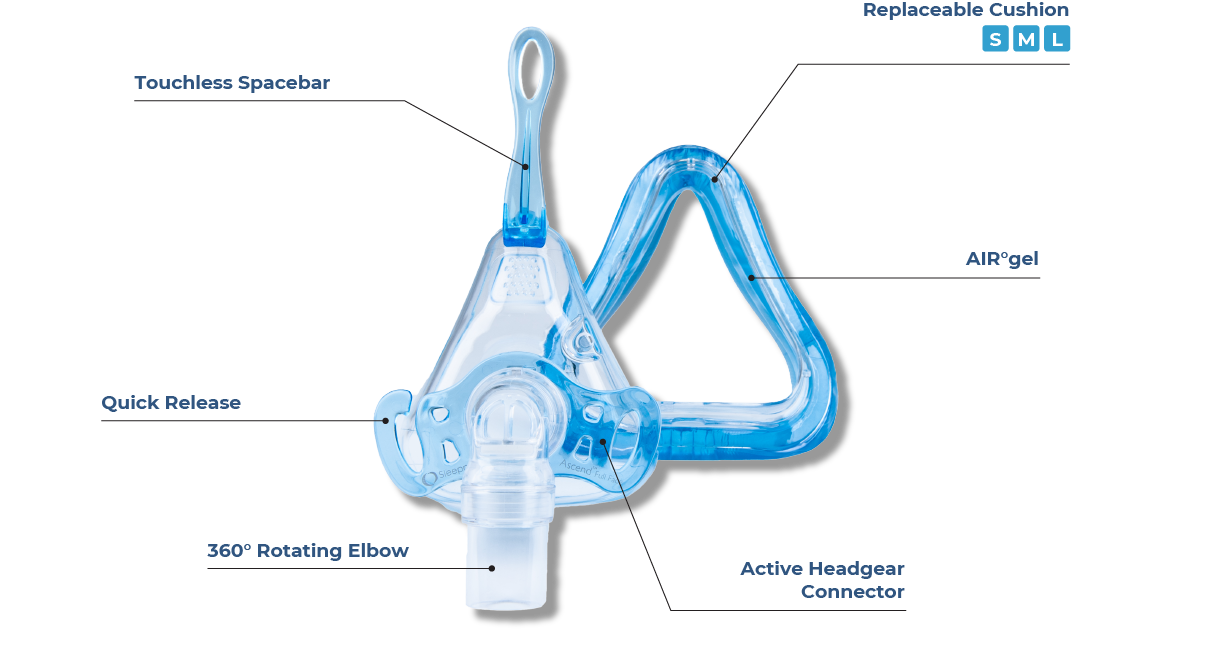
Features
Frequently Asked Questions
Adjust the Fit: The first step is to ensure a proper fit. Follow the manufacturer's instructions for adjusting the straps and headgear to create a secure seal without over-tightening. The mask should be snug but not uncomfortable.
Position the Mask Correctly: Make sure the mask is positioned correctly on your face. For a nasal mask or nasal pillow, ensure that the nostrils are centered in the openings. For a full-face mask, ensure it covers your nose and mouth properly.
Check for Damage: Inspect the mask and its components for damage or wear. Over time, parts like the cushion, headgear, and straps can degrade, causing leaks. If you notice any damage, consider replacing the necessary parts.
Clean the Mask: A clean mask can provide a better seal. Regularly clean the mask and cushion as per the manufacturer's guidelines. Both debris and oils from your skin can accumulate on the mask's silicone cushion, leading to leaks.
Address Facial Hair: Facial hair can interfere with the mask’s seal. If you have facial hair, consider trimming it or using a different type of mask that may be more compatible with your facial hair.
Try Different Mask Types: If you've tried different adjustments and your current mask still leaks, consider trying a different style of CPAP mask. There are nasal masks, nasal pillows, and full-face masks, each designed to cater to different needs and facial structures.
Use Mask Liners or Sealants: Some users find success by using mask liners or sealants designed to help create a better seal and reduce leaks. Place liners or sealants between your skin and the mask cushion.
Consult Your CPAP Provider: If you're still experiencing leaks despite trying these steps, it's a good idea to consult your CPAP provider or sleep specialist. They can offer personalized advice and suggest a mask fitting or adjustments based on your needs.
Remember that achieving a perfect seal may take trial and error. It's essential to be patient and persistent while you work toward finding the best solution for your comfort and effective therapy.
Manufacturer Recommendations: The manufacturer of your CPAP mask usually provides guidelines on how often you should replace the mask components. Typically, this information is in the user manual or manufacturer's website.
Wear and Tear: Regular mask use can lead to wear and tear over time. Look for signs of deterioration, such as cracks, tears, or stretching in the mask material, headgear, and straps.
Leaks and Fit Issues: If you start experiencing leaks or the mask no longer fits properly despite adjustments, consider a replacement. A proper seal is essential for the effectiveness of your CPAP therapy.
Comfort and Hygiene: If the mask becomes uncomfortable or causes irritation, replacing it is a good idea. Additionally, maintaining good hygiene is crucial for avoiding skin issues and infections. If you're finding it difficult to clean the mask effectively, it might be time to get a new one.
Allergies or Sensitivities: If you develop allergies or sensitivities to the materials in your mask, you might need to switch to a different type or brand of mask.
Changes in Weight or Facial Structure: Significant changes in weight or facial structure might affect the fit of your current mask. If your mask no longer seals properly due to such changes, consider buying a new one.
Duration of Use: Most CPAP masks last 3 to 12 months with regular use. However, this can vary based on the factors mentioned above. Most insurance companies cover the cost of a replacement after three months.
Proper maintenance and cleaning of your CPAP mask can extend its lifespan. Follow the manufacturer's cleaning instructions and keep your mask and its components clean and well-maintained.
If you are unsure of when to replace your CPAP mask, consult with your healthcare provider or the supplier of your CPAP equipment. They can offer personalized advice based on your specific situation and needs.

